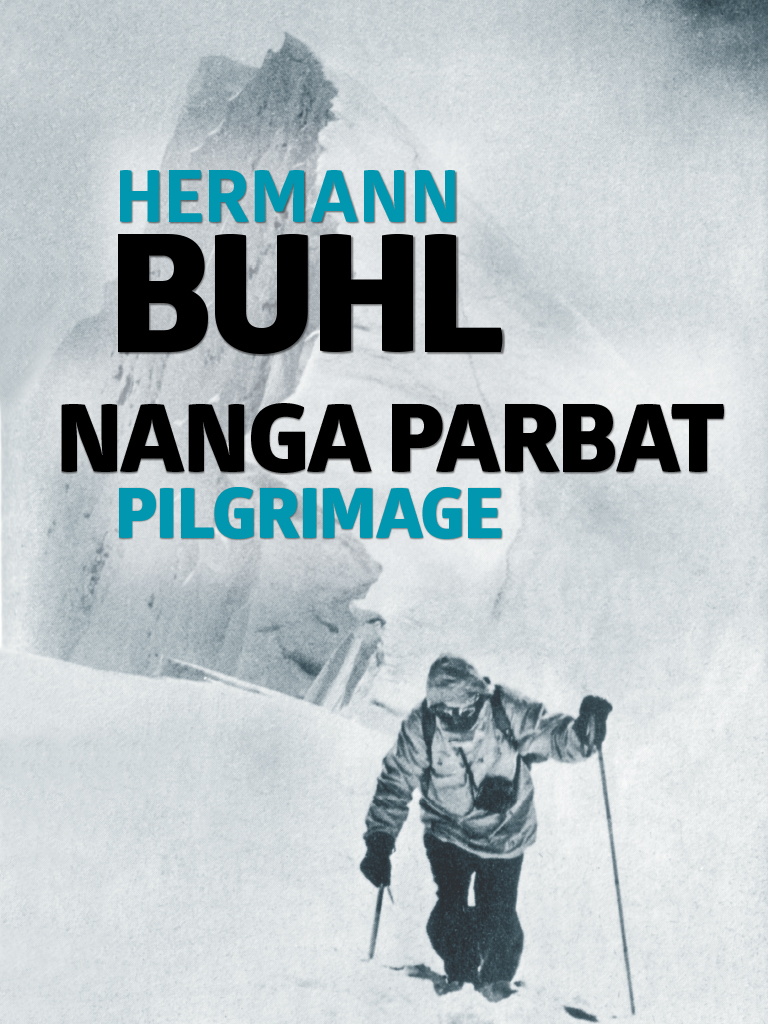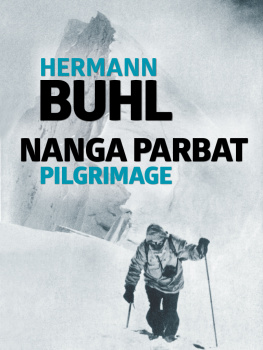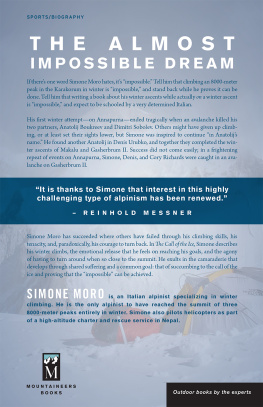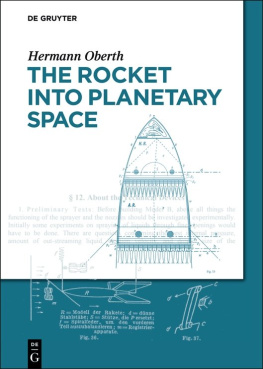Buhl Hermann - Nanga Parbat Pilgrimage
Here you can read online Buhl Hermann - Nanga Parbat Pilgrimage full text of the book (entire story) in english for free. Download pdf and epub, get meaning, cover and reviews about this ebook. City: Vertebrate Publishing, year: 2015, publisher: Vertebrate Publishing, genre: Non-fiction. Description of the work, (preface) as well as reviews are available. Best literature library LitArk.com created for fans of good reading and offers a wide selection of genres:
Romance novel
Science fiction
Adventure
Detective
Science
History
Home and family
Prose
Art
Politics
Computer
Non-fiction
Religion
Business
Children
Humor
Choose a favorite category and find really read worthwhile books. Enjoy immersion in the world of imagination, feel the emotions of the characters or learn something new for yourself, make an fascinating discovery.
- Book:Nanga Parbat Pilgrimage
- Author:
- Publisher:Vertebrate Publishing
- Genre:
- Year:2015
- City:Vertebrate Publishing
- Rating:4 / 5
- Favourites:Add to favourites
- Your mark:
- 80
- 1
- 2
- 3
- 4
- 5
Nanga Parbat Pilgrimage: summary, description and annotation
We offer to read an annotation, description, summary or preface (depends on what the author of the book "Nanga Parbat Pilgrimage" wrote himself). If you haven't found the necessary information about the book — write in the comments, we will try to find it.
Nanga Parbat Pilgrimage — read online for free the complete book (whole text) full work
Below is the text of the book, divided by pages. System saving the place of the last page read, allows you to conveniently read the book "Nanga Parbat Pilgrimage" online for free, without having to search again every time where you left off. Put a bookmark, and you can go to the page where you finished reading at any time.
Font size:
Interval:
Bookmark:


www.v-publishing.co.uk
When on 4 July 1953 Hermann Buhl returned to camp at 23,000 feet from a successful solitary attempt on Nanga Parbats 26,620-foot summit, he set the seal on what must almost certainly remain the outstanding achievement by a single human being in the long and yet unfinished history of mountaineering. Whatever circumstances may have combined to drive him to a performance so wildly contrary to all known rules and standards of prudent climbing practice, however undesirable the pattern may be for imitation by other more normally-conducted expeditions, the cold facts are that he had achieved something so far beyond the accepted limits of human possibility that, without the incontrovertible photographic and other evidence he brought back with him, one might at the time have been excused for doubting the authenticity of this manifestly true story. The astonishing facts are that, singularly ill-provided with food and drink, without the aid of oxygen, and absolutely alone, he climbed the last 4,000 feet of a Himalayan giant which had over the years already claimed thirty-one lives, undertaking at times technically difficult rock climbing over completely unknown ground at an altitude normally precluding any such physical effort, and finally reaching his objective late in the evening of a day involving seventeen hours of continuous effort. There he methodically took a number of faultless photographs, changed a film in the process and even built a miniature cairn, before committing his exhausted mind and body to a descent he knew to be technically even more difficult than the ascent had proved. Darkness caught him high up on the peak, forcing him to risk the most incredible bivouac in climbing history at 26,000 feet, a height at which, according to the rules, a night in the open meant certain death from exposure, but miraculously the weather was exceptionally still and warm by Himalayan standards and somehow Buhl lived through it. At dawn he renewed his lonely fight to escape from the mountains clutches and battle his way back to shelter, sustenance and human companionship, still 3,000 feet below. Exhausted and suffering from wild hallucinations, he tottered, reeled and fell, on frost-bitten feet, back to life and safety. For reasons still unexplained, nobody came up to meet him and when at endless last he staggered into camp and his waiting team-mates incredulously set about restoring his injured body and his failing brain, he had been engaged on his solitary, forlorn struggle against the elements, disaster and collapse for forty-one hours. The remarkable photograph taken of this good-looking young climber of twenty-nine directly after his return shows the face of an old, old man, haggard, drawn and deeply-scored by the ravages of that unparalleled ordeal. If ever a thousand to one chance came home, this was it.
Only a short but unique section at the end of this book deals with that final triumph on Nanga Parbat. The rest is Hermann Buhls climbing history from his days as a weakling among school-mates and a poor mans son, when an irresistible inner urge first drove him to become a frail and youthful climber, making straight from the start for difficult rock in his beloved homeland hills. Later, he was to qualify as a trained mountain guide, his physique fortified by seasons of heavy portering, and finally, by sheer persistence and restless endeavour on the severest of Severe rock climbs in his own Limestone Alps, in the Dolomites he adores, and, eventually, amid the rock, snow and ice of the great western Alpine peaks, he ploughed a lonely, individual furrow to reach a private pinnacle among climbers of the day, possessed by then not only of fantastic skill but of superhuman energy and endurance.
In Buhls story one rock epic is piled upon another, snow and ice hazards are plastered on top and finally, still driven by the admonition of a daemon unsatisfied that he had yet discovered the ultimate limits of his capabilities, he is to be found climbing alone, if possible in the fiercest winter conditions, frequently by night, and often in half the time, the great impossibles previously only mastered by a few combined ropes of legendary climbing aces. From the earliest days a Voice as clear as any heard by Joan of Domrmy had warned him that one day he would be called upon to face some mountain experience transcending all previous limits in difficulty, danger and magnitude.
Buhl had long decided to be ready when the call came; the whole of his climbing life was, in fact, dedicated to that end. Why he was ready and able to meet it when it sounded, as it did on that ill-assorted and strangely-conducted expedition to Nanga Parbat and there, reading between the lines, one senses a master not only of mountaineering, but of moderation will be clear to the reader who has followed this incomparable story of mountaineering skill, courage and hazardous achievement to its tremendous climax.
Hugh Merrick
1. Know thyself Socrates.
Nanga Parbat Pilgrimage was first published in Britain in 1956 and later in America as The Lonely Challenge. This was at a time when the great Himalayan first ascents were taking place and spawning a succession of worthy but repetitive expedition books. Buhls book, with its evocative mixture of alpinism, eastern Alpine rock climbing, and with a great Himalayan ascent thrown in almost as a bonus, struck an immediate chord with the ambitious young climbers of the day. Appearing at the same time as Guido Magnones The West Face and Gaston Rbuffats Starlight and Storm, it marked the change in climbing attitudes that had been taking place. The old guard had been preoccupied with classic alpinism whereas the writings of Magnone, Buhl and Rbuffat recorded the emerging brave new world of technical climbing. The new focus was for repeating the great Alpine north walls and the hard rock climbs on the awesome precipices of the Dolomites and the granite faces of the Dru and the Grand Capucin. Magnones writings on the Dru and Buhls and Rbuffats Eigerwand accounts laid down an irresistible agenda for the ambitious climbers of the day. Perhaps they were subconsciously preparing themselves for the obvious challenges of the Greater Ranges that were already beckoning as the first ascent phase drew to an end all the 8,000-metre peaks, with the exception of Shisha Pangma, having been climbed by 1960.
With the passage of time Buhls solo completion of the Rakhiot route on Nanga Parbat, sensational when it was done, is now confirmed as one of the greatest mountaineering feats of all time. Since then, this notorious first ascent route, that took so many lives during the various attempts in the 1930s, has been largely shunned in favour of more direct, steeper, but less serious lines on the Diamir and Rupal flanks. The Rakhiot route waited eighteen years to be repeated when the Slovaks Ivan Fiala and Michal Orolin reached the summit. Their photograph of the upper reaches of the mountain above the Bazhin Gap shows technical mixed ground of considerable difficulty. It speaks volumes for Buhls inner confidence and doggedness that he pressed on when he saw this. Before me lay a sharp rock ridge with a slabby face scored by countless gullies I soon found myself facing a vertical rock face, to climb which seemed to me a sheer impossibility.
Font size:
Interval:
Bookmark:
Similar books «Nanga Parbat Pilgrimage»
Look at similar books to Nanga Parbat Pilgrimage. We have selected literature similar in name and meaning in the hope of providing readers with more options to find new, interesting, not yet read works.
Discussion, reviews of the book Nanga Parbat Pilgrimage and just readers' own opinions. Leave your comments, write what you think about the work, its meaning or the main characters. Specify what exactly you liked and what you didn't like, and why you think so.













